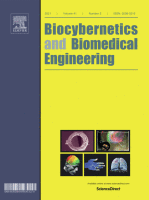Deep learning on ultrasound images of thyroid nodules
Biocybernetics and Biomedical Engineering,Volume 41, Issue 2, April–June 2021, Pages 636-655
Abstract
Due to safety, easy accessibility, noninvasively and cost-effectiveness of ultrasound imaging, this technology becomes one of the main contributors for analyzing thyroid nodules. However, interpretation of ultrasound images is a challenging task that subjects to the radiologist’s prior medical knowledge and observational skills. There is a significant need for reliable, objective, and automated approaches for the meaningful assessment of ultrasound images. Many areas of machine learning including computer vision and image processing have been revolutionized by the recent advances in the field of deep learning. The current study systematically reviews the existing literatures and evaluates technical characteristics of the deep learning applications on the ultrasound images of thyroid nodules.
In this review, all of the included studies have been published from 2017 to 2020 indicating the recent growing interest in the utilization of deep learning-based techniques for assessment of ultrasound images of thyroid nodules. Although deep learning has demonstrated potential for analyzing thyroid nodules’ ultrasound images, this review highlights several existing barriers that need to be addressed in future works such as dealing with data limitation, generating public and valid datasets, and determining standard evaluation metrics. This survey outlines several methods (e.g., data augmentation and transfer learning) recently proposed to address similar challenges in other fields. Furthermore, to improve the diagnostic accuracy of the deep learning models, utilization of complementary information with multi-modal images are suggested.
The protocol of this systematic review was registered in the PROSPERO database (CRD42020168346).
Keywords:

